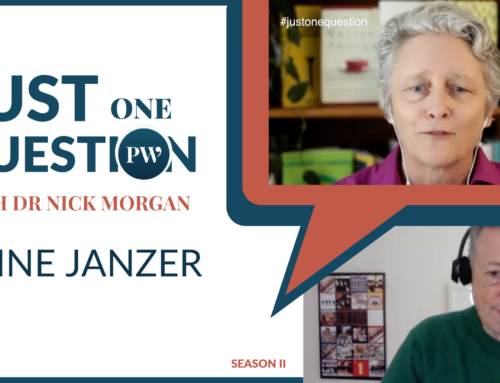I frequently get asked about the best way to get a book published. Following is a quick guide to the practicalities of the sometimes confusing current world of book publishing.
The good news today is that you, the would-be author, have choices that haven’t existed in quite as rich a way in the past. The bad news is that, if you want to publish through a traditional press, the journey is harder than ever.
Traditional publishing is difficult for the first-time author. Let’s say your dream is to get published in the old-fashioned way by one of the big-name publishers. At the moment, there are five big publishing houses left: Penguin/Random House, Hachette Book Group, Harper Collins, Simon and Schuster, and Macmillan. There may be four in a year or so: Penguin is attempting to acquire Simon and Schuster, but for now the deal is blocked for anti-trust concerns.
To approach one of these big five publishers, you need to have a literary agent advocating for you. To get a literary agent on your team, you need to pitch them with an idea for a book, and a plan for selling it, that are sufficiently compelling to persuade them to take your book project on. Both of these hurdles are difficult leaps for first-time authors, since both agents and publishers like authors who have already proved that they can sell books. But if your idea is compelling and your marketing plan is convincing, an agent may take you on, and attempt to sell your book project to a publisher.
If the publisher buys your book idea based on the proposal, they typically pay you an advance of anywhere from $5K to $500K or more (the higher advances tend to go to celebrities and politicians) to write the book. Contracts usually give you 6 months to write the actual book, but you can negotiate longer or shorter writing terms. The idea comes from the historical notion that an author was impecunious and needed money to write the book. Today, it represents a bet on the part of the publisher that you will sell a certain number of books, and “earn back your advance.” Never offer a fully written manuscript directly to a publisher, by the way; it screams ‘amateur’.
Here’s how it works. Let’s say the publisher pays you a $30K advance. And, to make the math easy, let’s say your contract pays you $3 per book on a book that sells retail at $25. That means if you sell 10,000 copies of your book, you have earned back your advance (3 x 10,000) and you and the publisher are even. If you sell any more books after that, you’ll get your $3 a book for each book you sell.
Let’s say you ultimately sell 20,000 copies of your book – a very successful run these days. Then, you’d have the $30K advance, and the 3 x 10,000 for the additional books you sold, or another $30K. Total earnings, to you: $60K.
Hybrid publishing is a much better financial deal on the same book sales. Your next option is to consider hybrid publishing. Hybrid publishers typically don’t require the go-between of an agent. You approach them directly. They won’t publish every idea for a book that comes their way, but if your idea is sound and you can make the case that you have a way to sell the book, then it is likely they will take you on. Why? Because, instead of an advance from them, you will be paying them to print your book. You are the customer paying the bills in this case.
Let’s use the same numbers as in the traditional publishing example above. You decide to print 10,000 copies of your book. To make the math easy, again, let’s say the cost of that print run (which will vary according to the paper quality you choose, and a variety of other factors) is $30K, or $3 per book.
Once the books are printed, then they are yours to sell. Let’s say you sell all 10,000 at $25 per book. That means you have earned $250K, less your $30K outlay, or $220K. Now, to make the examples equivalent, if you sell another 10,000 copies at the same price, you’ll make another $220K, or a total of $440K net for selling 20,000 copies.
Compare that to the $60K net with the traditional publisher, and you’ll see why so many authors today are choosing this option.
Are you missing out on anything by going the hybrid route? Just the traditional publisher’s brand name; the glory associated with being published by, say, Random House.
Finally, there is a third option. If you can’t afford the cash outlays associated with a hybrid publishing run, you can use a Print-on-Demand publisher like Amazon or IngramSpark. You deliver the computer files of your book and its layout to one of these two and settle on a price. Then you typically get roughly 60% of the sales price net to you as the books are sold. There is no inventory of books, no print run. They are printed on demand; that is, when someone asks for a copy. So if lightning struck, and you sold 20,000 copies to your fans, you’d clear something like $300-400K on those books if you sold them at $25 a copy, after you paid the POD publisher roughly $100-200K printing costs, say $5-$10 per book. The numbers are only an estimate range because the costs vary considerably depending on the choices you make about the number of pages, paper, binding, and so on.
Three very different options for you to choose among. It’s an exciting, and confusing, time to be an author. I’ve only gone over the very basic details of the various paths; ask questions in the comments or email me directly if you want more detailed information. Your experience may vary – widely – given that there are long books, short books, big books, small books, books with pictures, books with fold-out maps, books with slipcovers – the varieties are as endless as human creativity. Best of luck.









Nick, it is a wonderful time to be an author. So many options to publish! Besides the ones you mentioned, there are also smaller niche publishers and academic presses. I’ve published every one of these ways! With Penguin Random House, with a hybrid, with Amazon, and wit MIT press. All are good depending on goals.
Yes, for an established author like you, David, the Amazon route made sense, as I recall, for bringing out a very fast book early in the pandemic about virtual speaking. Do I remember that correctly? Each of these routes may make sense depending on where the author is in his/her journey.
thanks so much for clarifying the publishing possibilities in 2022.
Thanks, Joyce — understand that this is only the beginning of the possibilities of the publishing world. There are more nuances, more options, and ‘individual mileage may differ’!
Thank you for the clarification but I am a high school student in Kenya, please, do you have any other advice from that angle?
Hi, Sandra — I don’t know much about publishing in Kenya, but I would research local publishing houses to see what’s available. It’s usually best to start with your home country. Hope that helps!